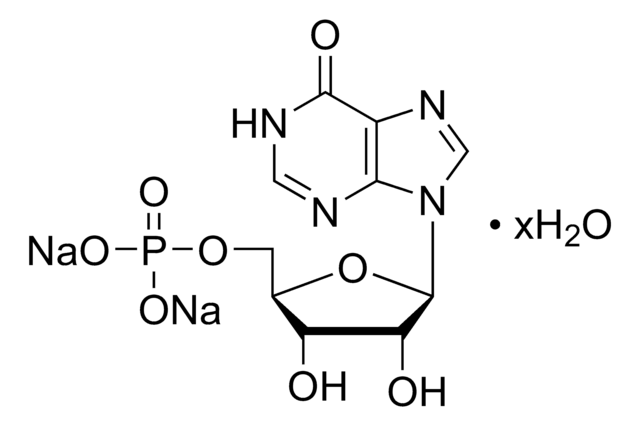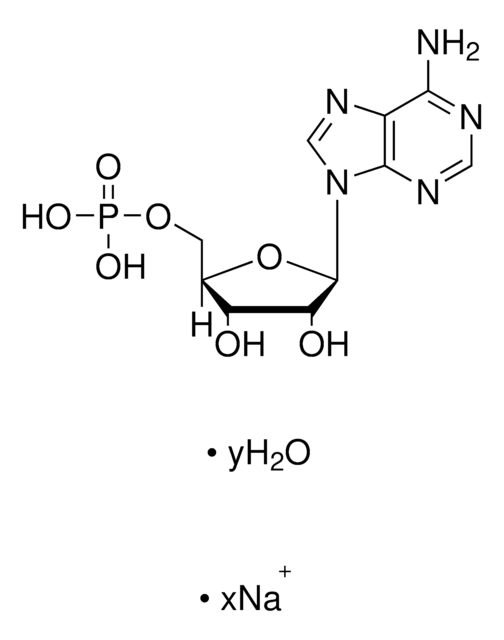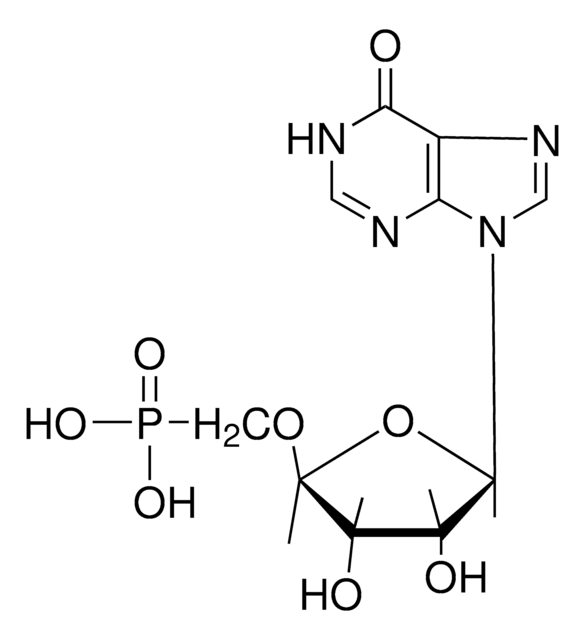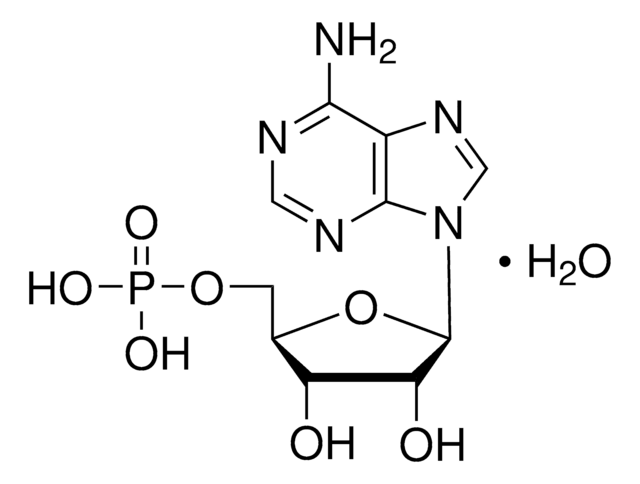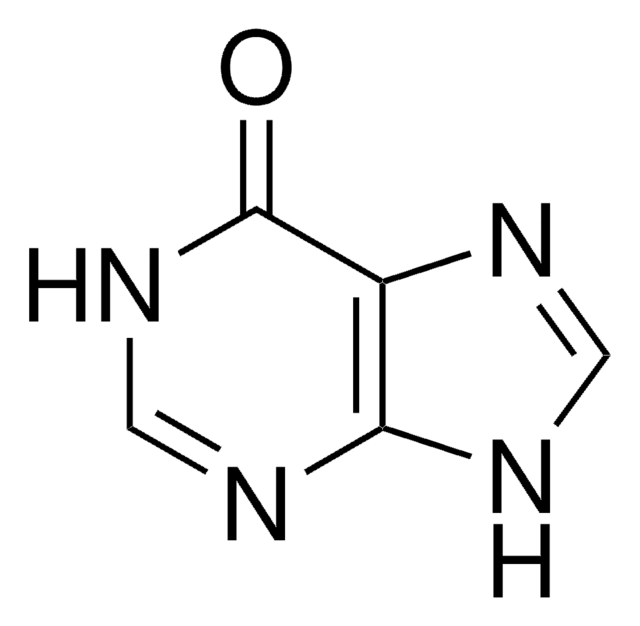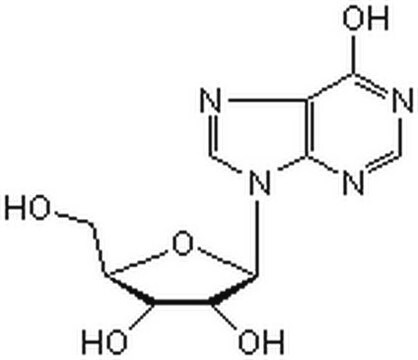I4625
Inosine 5′-monophosphate disodium salt hydrate
from yeast, Grade III, ≥98% (HPLC)
Synonyme(s) :
5′-IMP-Na2, 5′-Inosinic acid disodium salt hydrate, I-5′-P, IMP, Inosinic Acid
About This Item
Produits recommandés
Source biologique
yeast
Niveau de qualité
Type
Grade III
Pureté
≥98% (HPLC)
Forme
powder
Solubilité
water: 50 mg/mL, clear, colorless
Température de stockage
2-8°C
Chaîne SMILES
[Na+].[Na+].O[C@H]1[C@@H](O)[C@@H](O[C@@H]1COP([O-])([O-])=O)n2cnc3C(=O)NC=Nc23
InChI
1S/C10H13N4O8P.2Na.H2O/c15-6-4(1-21-23(18,19)20)22-10(7(6)16)14-3-13-5-8(14)11-2-12-9(5)17;;;/h2-4,6-7,10,15-16H,1H2,(H,11,12,17)(H2,18,19,20);;;1H2/q;2*+1;/p-2/t4-,6-,7-,10-;;;/m1.../s1
Clé InChI
KQCIGEIXDXQSGM-MSQVLRTGSA-L
Vous recherchez des produits similaires ? Visite Guide de comparaison des produits
Catégories apparentées
Application
- as a 5′-ribonucleotide tastant compound in taste-detection threshold tests in chicks
- for standard curve generation in high-performance liquid chromatography (HPLC) to quantify IMP from prawn tail tissue samples
- as a component of McCoy′s 5A complete medium for Plasmodium vivax culture
Actions biochimiques/physiologiques
Code de la classe de stockage
11 - Combustible Solids
Classe de danger pour l'eau (WGK)
WGK 3
Point d'éclair (°F)
Not applicable
Point d'éclair (°C)
Not applicable
Équipement de protection individuelle
Eyeshields, Gloves, type N95 (US)
Certificats d'analyse (COA)
Recherchez un Certificats d'analyse (COA) en saisissant le numéro de lot du produit. Les numéros de lot figurent sur l'étiquette du produit après les mots "Lot" ou "Batch".
Déjà en possession de ce produit ?
Retrouvez la documentation relative aux produits que vous avez récemment achetés dans la Bibliothèque de documents.
Les clients ont également consulté
Articles
Neoplastic cells are highly dependent on the de novo synthesis of nucleotides to maintain sufficient pools to support DNA replication and the production of RNA.
Notre équipe de scientifiques dispose d'une expérience dans tous les secteurs de la recherche, notamment en sciences de la vie, science des matériaux, synthèse chimique, chromatographie, analyse et dans de nombreux autres domaines..
Contacter notre Service technique